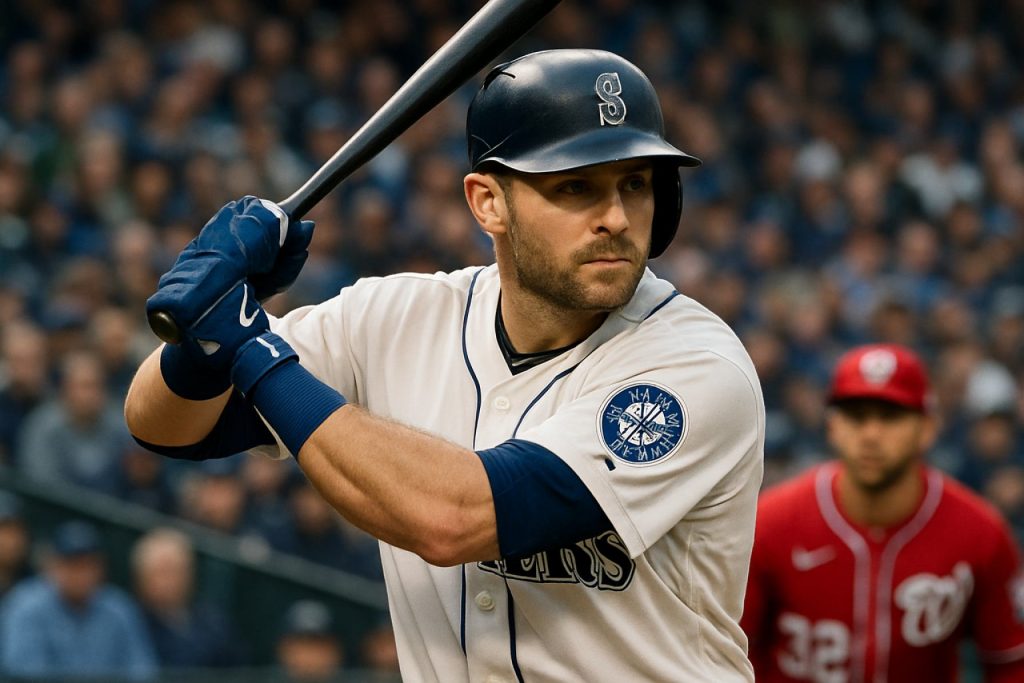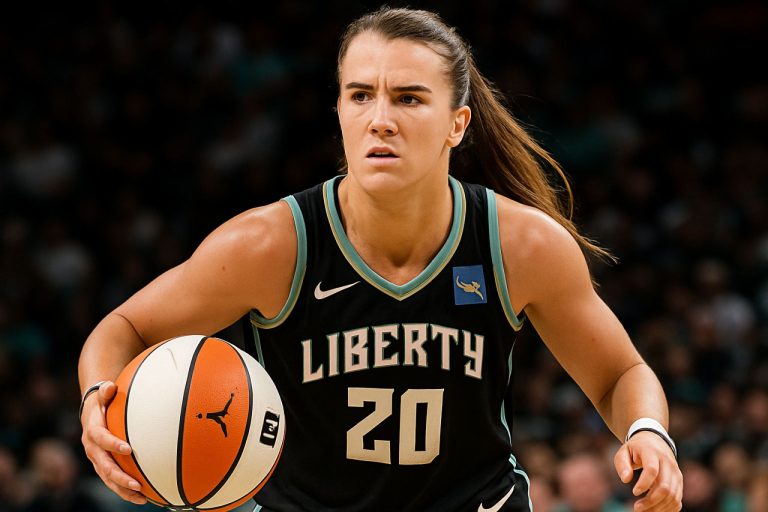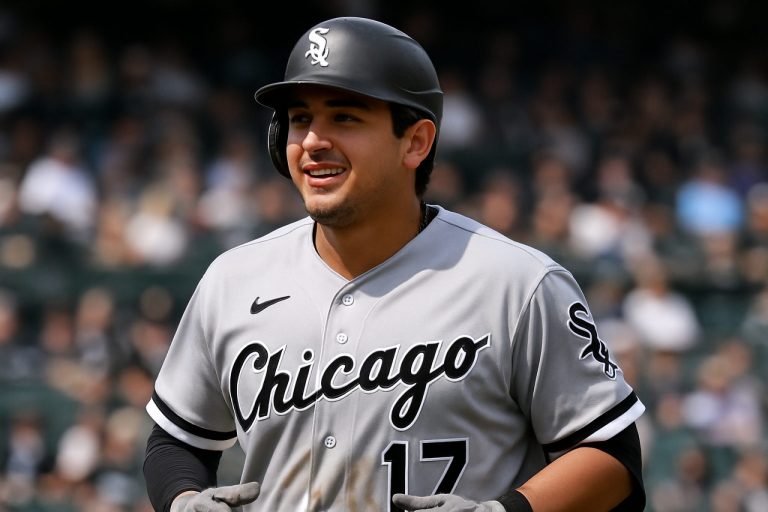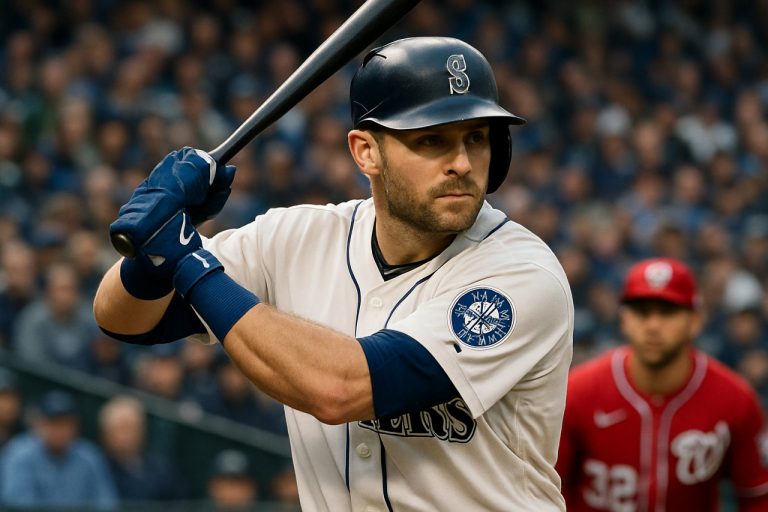
- The Seattle Mariners return home after a tough sweep by the Houston Astros, shrinking their lead in the AL West and raising urgency for the upcoming homestand.
- The Washington Nationals, once struggling, now pose a threat with breakout stars James Wood and CJ Abrams and improved offense.
- The Mariners’ bats have gone cold, especially in May, aside from standout performances by Julio Rodríguez, Cal Raleigh, and Randy Arozarena.
- T-Mobile Park remains a challenge for hitters, contributing to the Mariners’ offensive struggles.
- Facing strikeout leader MacKenzie Gore and a Nationals team on the rise, Seattle’s vulnerability to left-handed pitching is a concern.
- Seattle must rely on pitching—especially George Kirby, Logan Evans, and Emerson Hancock—to stabilize the team until reinforcements arrive.
- The series represents a turning point; the Mariners must respond if they hope to maintain momentum and division hopes.
A pall settled over T-Mobile Park as the Seattle Mariners limped back home, bruised by a holiday sweep from the Houston Astros that erased their cushion atop the AL West. The echoes of Houston’s bats rang in the Mariners’ heads, and as the city’s clouds gathered, so did a sense of urgency. The nine-game homestand ahead—on paper—looked forgiving. But the first guests, the Washington Nationals, arrive bearing fire in their eyes and heat in their bats.
No team has lost more games than the Nationals since their 2019 World Series miracle—except for two—and yet, this club is suddenly no pushover. Washington just peeled off seven wins in ten games, fueled by breakout slugger James Wood and electrifying shortstop CJ Abrams. That duo hammered five home runs in their last ten games, injecting much-needed gasoline into the team’s offense. Dylan Crews, the vaunted No. 2 draft pick just behind Paul Skenes, has shaken off a rocky big league debut with three homers and a remarkable .394 on-base percentage since mid-May.
For Seattle, these sparks from a previously lifeless opponent feel especially ominous. The Mariners’ offense, so lively in April, has gone glacial in May: a mere 3.5 runs per contest since the third. Only the luminous trio of Julio Rodríguez, Cal Raleigh, and Randy Arozarena have held the line, posting a collective 154 wRC+ this month. But elsewhere, the hits have withered—J.P. Crawford’s bat has cooled in the leadoff spot, while Jorge Polanco’s struggles in the No. 2 hole have left innings stranded and fans sighing.
Home turf offers little solace. While some ballparks thaw icy bats, T-Mobile Park has transformed into a hitter’s tundra. Mariners sluggers have managed just a .673 OPS at home in 2025—seventh worst in all of Major League Baseball.
As if to underscore the challenge, MacKenzie Gore—MLB’s strikeout leader with 93—looms in Thursday’s series finale. The Mariners have wilted against left-handed pitching so far, batting just .238 with a .653 OPS when a southpaw starts. Gore’s presence is less a light at the end of the tunnel, more a freight train.
Defense and pitching now become Seattle’s slimmest shields. The town turns its anxious eyes to George Kirby, returning to the mound at home with a chance to steady the rotation, while young arms Logan Evans and Emerson Hancock look to extend their bright flashes. There’s a faint hope for a Bryce Miller appearance to add further fire to the mound.
The calculus of division standings is unforgiving. The Mariners saw their lead over Houston shrink from 3.5 games to just 1.5 in a single weekend, and the Astros await the reeling Athletics while Seattle battles what many once called one of baseball’s softest teams. With a 9-11 record dating back to early May, the Mariners cannot afford to blink—not when mediocrity threatens to swallow momentum and division leads alike.
Still, hope stirs in the Pacific Northwest. The return of injured regulars, the ascent of prospects, and the looming July 31 trade deadline hint at reinforcements. Fans whisper the mantra—Things will get better. But for now, every pitch, every at-bat, every defensive play under the T-Mobile lights will reverberate far beyond a single series.
This homestand is less a respite, more a crossroads. Even wounded teams, as the Astros reminded Seattle, can bite. Even the struggling Nationals can surge. Those who thrive in Major League Baseball know: Take no opponent lightly, or risk becoming the next cautionary tale.
The key takeaway: The Mariners’ season teeters, and complacency is a luxury they cannot afford. Against a resurgent Nationals squad, this series could either halt the Mariners’ slide—or turn warning signs into alarms. The eyes of the division—and the hopes of a restless fanbase—are watching.
Under Pressure at the Park: Why the Mariners’ Next Homestand May Define Their Season (And What They Must Fix Now)
The Seattle Mariners return to T-Mobile Park reeling from a sweep at the hands of the Houston Astros, facing a critical juncture not just for their playoff aspirations but for the psychological momentum of the season. As they square off against a surging Washington Nationals team, urgency, strategy, and the ability to overcome adversity are at the forefront. Here’s what’s at stake—and what fans, players, and analysts need to know.
Uncharted Storylines the Source Barely Touched
1. How Injuries Have Subtly Undermined Seattle
– Ty France’s Absence: The injury to key hitter Ty France has forced lineup shuffles and may have contributed to the Mariners’ offensive struggles. A healthy France provides needed balance and power.
– Mitch Haniger’s Role: Though not currently on IL, Haniger has battled nagging ailments, diminishing his power numbers. His veteran leadership is missed when he’s less than 100%
2. The Nationals’ Quiet Revolution
– Player Development Renaissance: After years of being one of MLB’s losingest teams, Washington’s recent drafts are paying off. CJ Abrams and James Wood have both projected as core pieces, not just hot stretches.
– Dylan Crews’ Versatility: Widely regarded for his defensive skills, Crews also brings elite base-running, with a sprint speed in the top quartile—contributing in more ways than his home run spike suggests.
– Bullpen Beast: The Nationals’ bullpen has quietly improved—posting a 3.55 ERA in the last month, spearheaded by closer Kyle Finnegan—much better than their starting reputation would indicate.
3. Seattle’s Striking Home/Road Splits
– Not only are the Mariners struggling offensively at home (.673 OPS), but they’ve averaged 1.1 more runs per game on the road—a sign of how the chilly, marine-influenced T-Mobile environment suppresses offense.
4. The Analytics Behind the Slump
– Advanced Metrics: According to Statcast data, Seattle hitters have dropped from a league-average 45% hard-hit rate in April to below 36% in May.
– Clutch Hitting: In “late and close” situations, Seattle’s batting average (.199) ranks 26th in MLB—exacerbating the sense of missed opportunities.
5. Market Forecast & Industry Trends You Should Watch
– Trade Deadline Buzz: The Mariners’ front office is rumored to be targeting middle-infield depth and another left-handed bat as the July 31 deadline approaches.
– Rising Ticket Demand: With summer heating up and a wild-card race at hand, T-Mobile Park is seeing increased ticket prices and resales; fans are literally buying into the tension.
Most Pressing Questions, Answered
Q: Can the Mariners’ rotation alone carry them?
– Short-term, yes—but the offense must recover. The rotation (3.24 ERA, 2nd in AL) is a genuine strength, but without run support, quality starts will often go unrewarded.
Q: Who on the Mariners is primed for a breakout or turnaround?
– Trent Thornton: The veteran reliever has averaged over a strikeout per inning and could land in higher-leverage spots.
– J.P. Crawford: His track record suggests a bounce-back is likely; his BABIP (.237) is well below his career norm, indicating some bad luck.
Q: How legit is MacKenzie Gore’s strikeout surge?
– Gore’s current 12.1 K/9 is backed up by a fastball velocity jump (96 MPH avg), plus a slider that’s generating a 39% whiff rate. His underlying peripherals suggest this is sustainable.
Q: Could Seattle run into longer-term problems if the offense doesn’t warm up?
– Absolutely. The Mariners are among the “bottom five” teams in both home runs and OPS since May 1. Historically, teams this light-hitting rarely make deep postseason pushes without an in-season trade or prospect breakout.
Real-World Use Cases, Reviews, and Comparisons
– Mariners vs. AL West Rivals: Recent comparisons show that both Houston and Texas have more diversified offenses, especially against left-handed pitching, a Seattle weak spot.
– Nationals Bullpen vs. Mariners Bullpen: While Seattle’s bullpen is solid, the Nationals’ pen is a surprise strength—making late-game comebacks tougher.
– Prospect Impact—James Wood vs. Julio Rodríguez: Both are young, toolsy outfielders. Rodríguez is a past Rookie of the Year, while Wood, at only 21, is already showcasing exit velocities (110+ MPH) comparable to the best young stars.
Controversies and Limitations
– Ballpark Factors Debate: Some analysts argue that T-Mobile Park’s park factor unfairly penalizes Mariners hitters; others contend that hitters must simply adjust.
– Front Office Patience: There’s fan frustration over the slow pace of call-ups/promotions—should Seattle push the pedal to the metal and promote more top prospects?
Security & Sustainability
– Player Health: Seattle’s sports science and injury-prevention protocols have improved, but chronic issues among core hitters are concerning.
– Payroll Flexibility: The Mariners have a mid-tier payroll, which could limit trade options—but may also make them nimble for deadline deals if the market softens.
Quick How-To: Improving Offense at T-Mobile Park
1. Focus on Contact: Prioritize hitters with high contact rates and gap power over pure sluggers.
2. Exploit Opposing Bullpens: Work pitch counts early—even a strong starter like Gore won’t go nine.
3. Aggressively Run: Use the speed of Rodríguez and Arozarena to pressure defenses and steal runs.
Actionable Recommendations & Quick Tips
– For Fans: Grab tickets for the Nationals series to see top prospects in action; dynamic ticket pricing may favor weekday games.
– For Fantasy Players: Stream George Kirby or Mariners relievers for strikeout upside versus a Nationals team that still strikes out more than average.
– For Management: Explore lineup tweaks—consider moving Raleigh up to 2nd to spark more rallies.
– For Casual Watchers: Keep tabs on late-inning performance—a telling indicator of the Mariners’ resilience and playoff chances.
Key Takeaway Revisited
The Mariners are at a crossroads—both tangible (in their division lead) and intangible (in team confidence). This week’s homestand could either arrest their slide or cement them as sellers at the trade deadline. The urgency is real, and every pitch at T-Mobile Park will matter. Don’t just follow the scores—watch for the energy, the adjustments, and whether a galvanizing moment sparks a turnaround.
For more up-to-the-moment updates, check the official Major League Baseball site.
Final Word: Don’t Sleep on the “Easy” Series
The biggest trap for contenders? Underestimating teams on the upswing. The Nationals have gone from easy win to dangerous spoiler, and if the Mariners continue to let winnable games slip away, the AL West will be up for grabs. Stay alert, stay engaged, and expect fireworks—one way or another.



